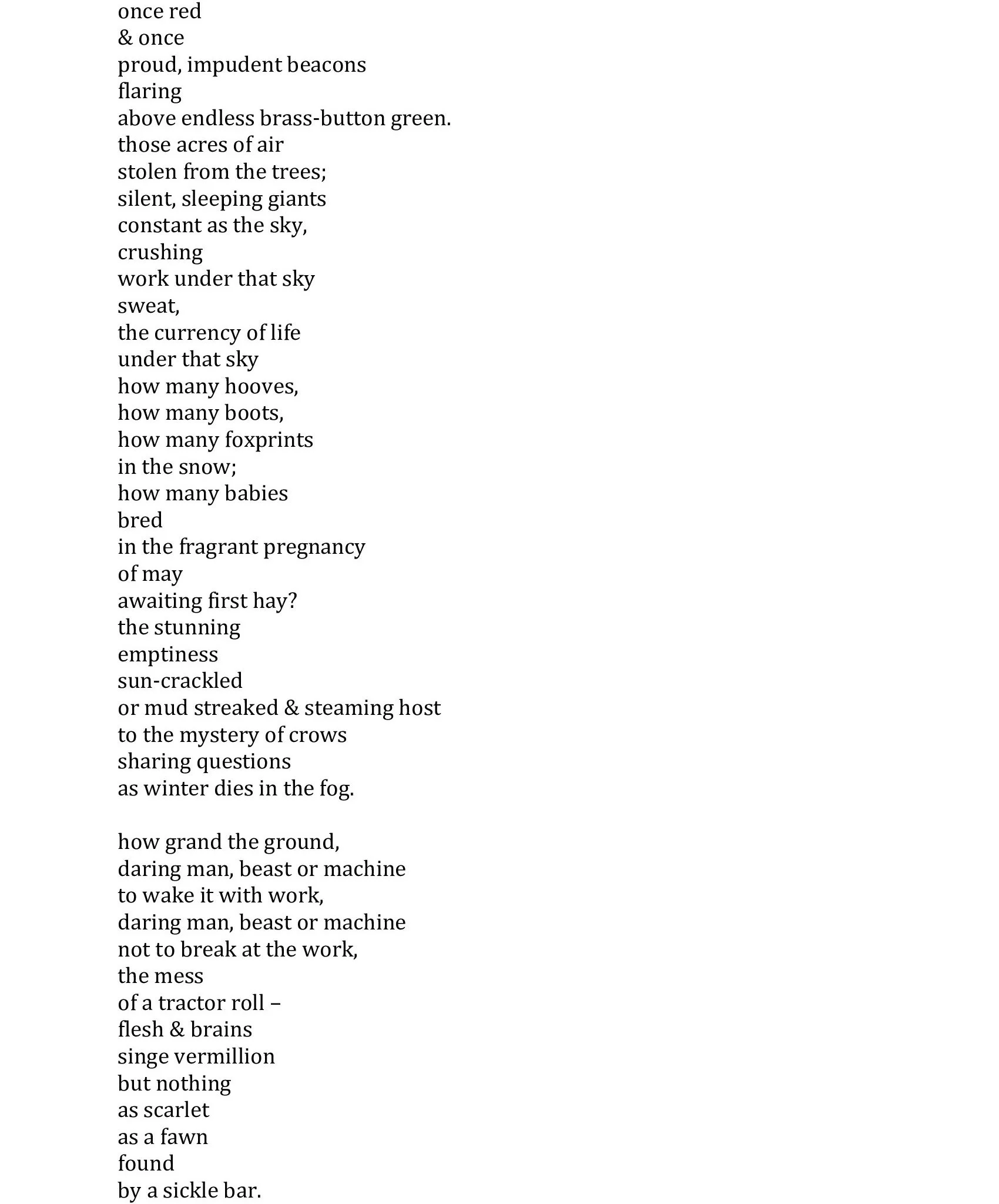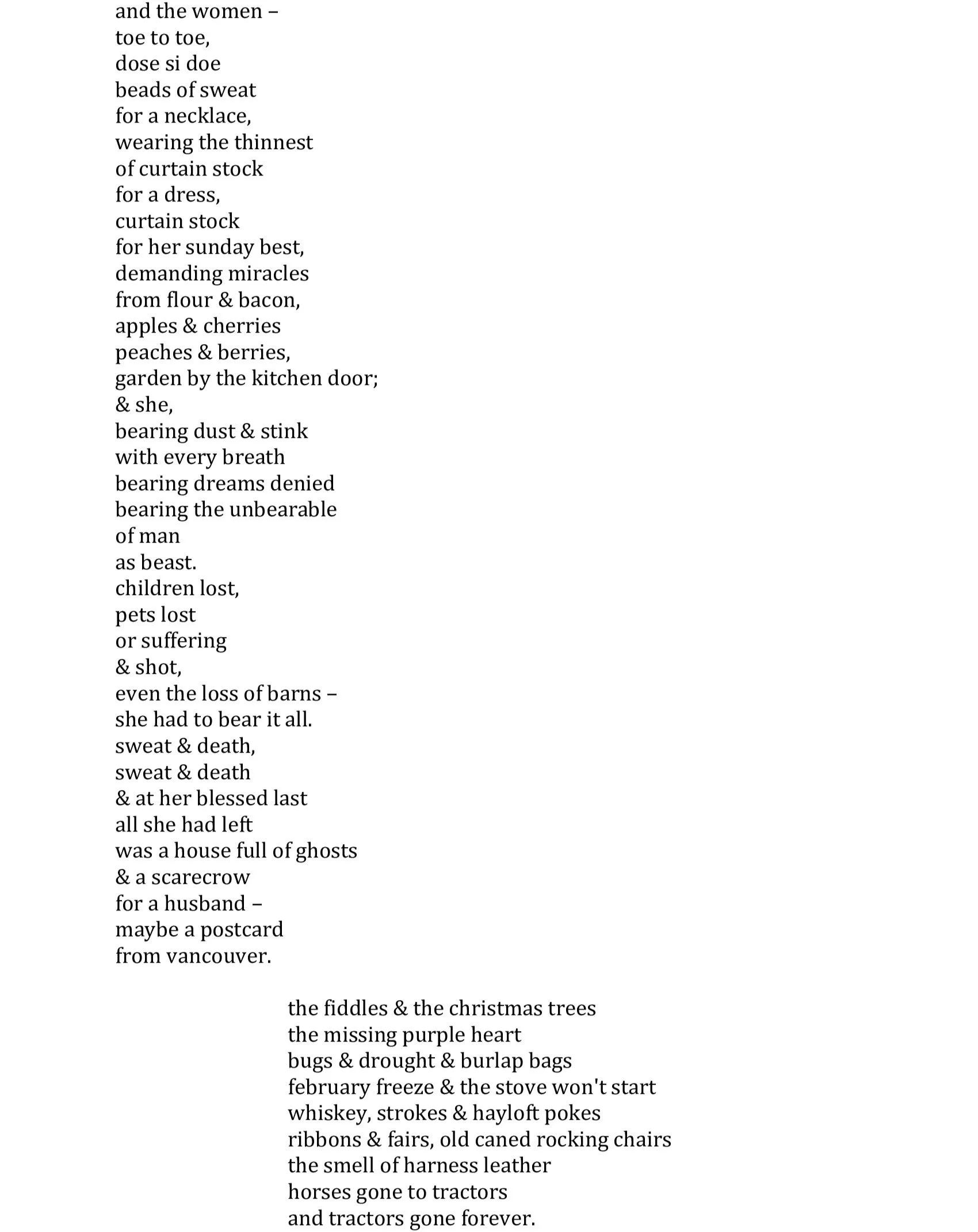Runner-up, 2024 River Heron Poetry Prize
[The poem is] basically a farewell to farming as a way of life & a tribute to Prine, who would have done a finer job & added a little humour. when I scribbled "... acres of air stolen from the trees", I knew I'd found the language I wanted. also wanted to give voice to the secret strength in ag life – women. in most cases men did the work but their wives or mothers ran the farm.
Mr. Tippett is a graduate of the Vassar College Creative Thesis program & a political casualty of the MFA program at Sarah Lawrence. More than slightly uncomfortable with the title "poet," Tippett refers to his work as "scribbles" in tribute to Alexander Pope. Described as "Expressionist," his writing thoroughly exploits the language with word play & word invention. Except in rhyme, the work enthusiastically shuts out the word "I," allowing a reader to stand back & take in landscape & "feel." Influences include J.W. Turner, Constable, Degas, Auden, cummings, R. Penn Warren, Dylan, Jagger/Richards & Prine.
From Diane LeBlanc, Judge, River Heron Poetry Prize
After reading this poem, I couldn’t stop thinking about the world and the history I’d entered through the enigmatic door in its title. This poem combines a moment of witness and a compelling narrative, a then and now of time and place as it unearths the colonial history beneath barns, a church, and a cemetery. The unrestrained energy created through rhyme, repetition of word and sound, and line breaks that snap and crackle results in a poem that’s not exactly wailing grief, not exactly an elegy, not exactly a catalog of loss, but a rare combination of the power of each. Short lines, often with syllabic meter pounding within stanzas, move it quickly down the page. But it’s a poem to be spoken aloud for the full effect of sound echoing sense.
One of the most compelling elements of this poem is the perception of red. The poem opens with an image of barns “red/as the coats/who wanted those barns/under a throne.” Those barns flare and fade throughout the poem as the history of place unspools. But by the end, through time’s passage and the unstacking of historical layers, the red sun is the most prominent image. In the final comparison, barns are no longer the subject compared to something else; they become a way of seeing the sun “embering/red as barn.” The red barns become a way of seeing a much larger troubling history of everyone who has owned and worked and struggled in and because of those barns, markers of stolen land, ways of living that define people and place.
The curious title does some heavy lifting to define the poem’s genealogy. I don’t understand it fully, but I like to think of John Prine singing “red as a barn” in the way he used similes that seemed simple at first but became more complex and memorable with every performance. I had that same experience with this poem. When it sidesteps into a catalog of the farm women’s lives and losses, “all she had left,” I felt pure joy and sorrow for the “ribbons and fairs, old caned rocking chairs,” now lost and memorialized and never the same after this new history is told.






